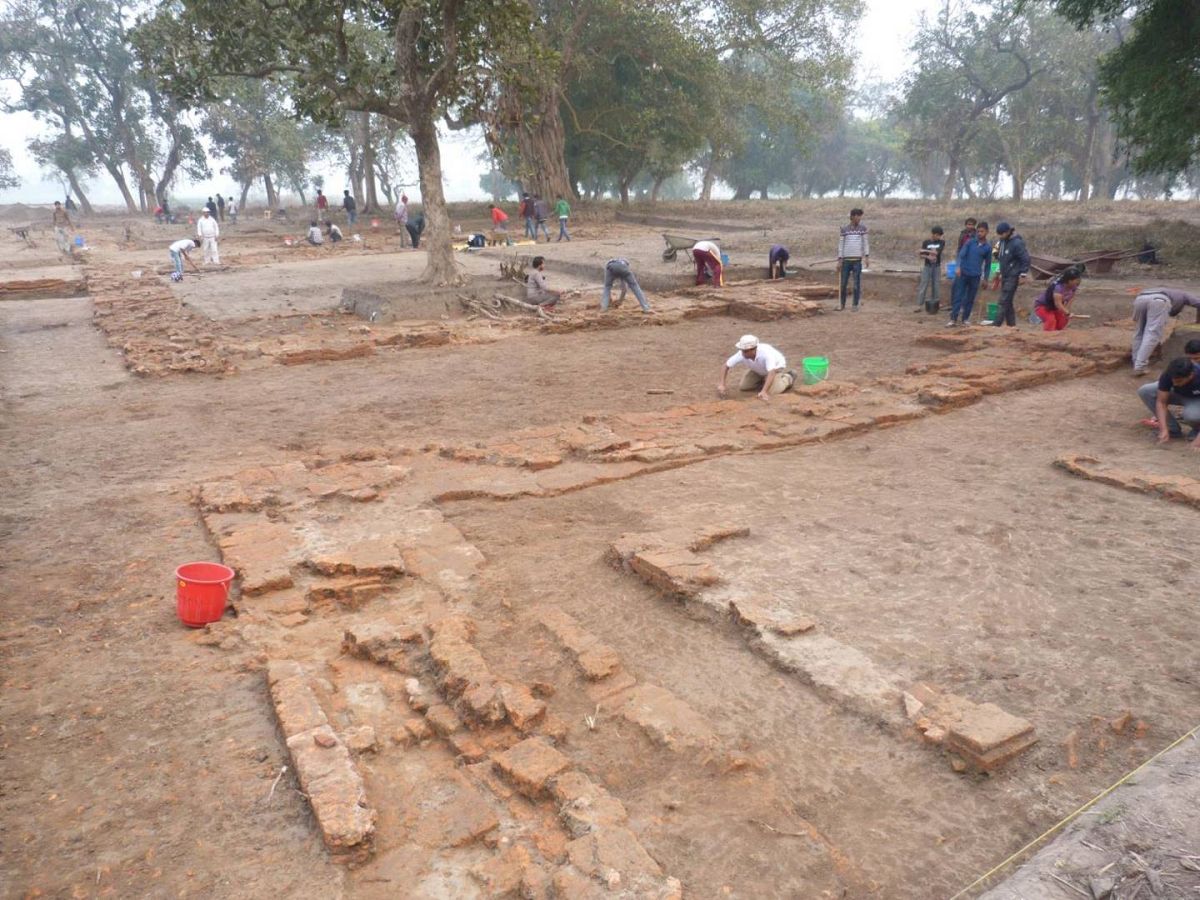Our UNESCO Chair team and Archaeological Services colleagues are working on fascinating investigations at a Nepal site widely recognised as the childhood home of the Buddha.
The UNESCO Chair was founded in 2014 and is held by Professor Robin Coningham in our Department of Archaeology. It was formed to help set benchmarks for measuring the social, ethical and economic impacts of cultural heritage. It also provides training to heritage professionals in South Asia and the UK.

Excavation at Tilaurakot
Over the last decade, the Durham team has worked with the Department of Archaeology (Government of Nepal) and the Lumbini Development Trust to learn more about the site of Tilaurakot in southwest Nepal. Tilaurakot has been identified by many scholars as Kapilavastu, the Buddha’s childhood home. It represents one of the best-preserved ancient cities within South Asia and now the Government of Nepal is preparing it for nomination as a UNESCO World Heritage Site. Evidence that the Durham team helped uncover will support the bid.
Expert mapping, geophysical survey, and excavation has shown the city to be extremely well planned, with a grid iron layout of streets leading to gateways through large ramparts and a wide moat. The streets are lined with brick structures, including shops and shrines, as well as a monumental administrative complex at the heart of the city. Surrounding the walled site are the remains of suburbs, industrial areas and religious establishments, including an extensive Buddhist monastic complex. A programme of scientific dating has placed the site’s origins back to the eighth century BCE, with occupation dated through to the eleventh century CE.
A workshop held in early March 2020, led by Durham’s UNESCO Chair and partners in Nepal, brought together experts from across Western and Southern Asia to undertake a comparative study of Tilaurakot with similar regional sites. A key part of the UNESCO’s World Heritage Nomination process, the comparative workshop delegates confirmed that Tilaurakot’s antiquity, longevity and features make it one of the best-preserved examples of an ancient city in South Asia. They also noted that further work was required to strengthen the bid for UNESCO World Heritage Status, including understanding of the city moats and the monastic complex.
Following this guidance, the Durham team is currently working at Tilaurakot, excavating the silted moat and the monastic complex, among other work. At the end of March 2023, a UNESCO International Scientific Committee Meeting took place to discuss the findings.
Find out more
- Learn more about the team’s work at Tilaurakot-Kapilavastu and their previous investigations at the nearby UNESCO World Heritage Site of Lumbini, the Birthplace of Gautama Buddha.
- Find out more about the research of the UNESCO Chair on Archaeological Ethics and Practice in Cultural Heritage Team
